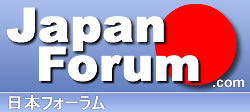
 |
Translate please
5 Attachment(s)
I have Kanji charts that need to be translated can someone help? |
1 Attachment(s)
Last one. I could not fit this one in with the others. |
Are you serious?
You want someone to translate the meanings and readings of 700+ kanji for you? Try studying them slowly. |
My friend, Wikipedia used to has grades, with the translation and reading of each kanji.
|
This is the funniest post I have read all week!
|
Here, my friend:
List of jōyō kanji - Wikipedia, the free encyclopedia |
These are all 'standard' Kanji that you can (and should) learn yourself with a nice set of flash cards. The readings for them can easily be found on the internet, at least by someone even a little bit resourceful.
Did you really expect someone to type out the kunyomi and onyomi readings for ALL these kanji? |
Thank you for your help. This is not funny if you are serious about learning it. I am very serious about learning what they mean. So any help is appriecated. |
Once again, the readings are available on the internet - someone has already even posted a link for you.
I'm glad you want to learn Japanese. Truthfully, if you learned all the Grade 1 Kanji in the first chart, you'd be making more progress than 90% of all the other people on this forum that say they are trying to learn Japanese. |
Quote:
I just needed to know what the years were about. Grade one was numbers right? I was hoping you could explain the order. |
Grade 1 does include all the numbers, but that's only a few of them. It's mostly just easy kanji for easy words, such as car, river, man, woman, red, white, big, small, among others. I don't believe they're grouped in any order except by difficulty - you can probably see that the higher grade kanjis are a lot more complicated than the lower grade ones.
Edit: not sure if you were aware, but the "grade" actually refers to the grade level that Japanese schoolchildren learn these kanji. |
The grades relate to school grades I believe. Grade 1 = Kanji Japanese kids learn in 1st grade (age 6-7).
Its basically in the order of easy to hard. The Kanji at the beginning are easier (with fewer strokes) and are most commonly used. They are also Kanji that are used as parts to make up other more complicated Kanji. |
Thank you for your help. I understand now. |
| All times are GMT. The time now is 09:52 AM. |